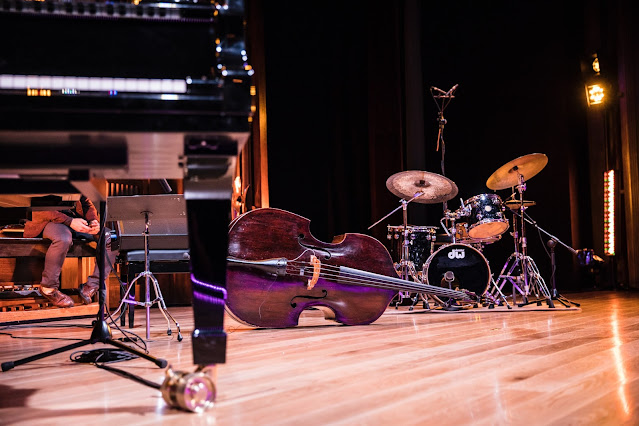Master Worship Music Chords: Learn & Play Today
Begin a musical journey that's full of devotion's sweet sounds. Learn worship chords for beginners, whether on guitar or piano. Understand worship guitar chords and piano worship chords to enhance your music. Explore praise and worship chord patterns to create soul-touching melodies.
Playing worship music is more than just hitting the right notes. It's about expressing your faith with melody and harmony. With worship chord progressions, newcomers can play easy worship songs guitar chords. This guide makes worship music simple for every budding musician.
Get your instruments ready and open your heart to praise harmonies. Today, worship chords are not just faith symbols. They're proof of your musical mastery in this deep style.
Key Takeaways
- Beginners can easily learn and play worship music.
- The guitar and piano are ideal for mastering worship melodies.
- Understanding chord patterns is key to playing impactful worship songs.
- Essential chord progressions simplify learning worship music.
- Playing worship music is a soulful expression of faith and devotion.
- Aspiring musicians are guided to confidently play worship chords.
The Basics of Worship Music Theory
Learning music theory can take a worship leader's skills to new heights. It helps in creating deep and touching worship moments. Knowing about major and minor worship chords and time signatures in praise music can make the worship more spiritual and connect people more deeply, like learning way maker chords.
Understanding Major and Minor Chords
At the heart of worship music theory lie major and minor chords. They each have their own feel and spiritual meaning. Major chords bring feelings of joy and triumph to worship songs.
Minor chords, on the other hand, can make a song feel solemn or introspective. This mix of feelings is key for a worship leader. It helps create a service that moves people's spirits.
The Role of Key Signatures in Worship Music
Key signatures do more than just serve as technical parts of music. They guide the emotional flow of worship songs. Each key can make the music feel different, changing how people feel and react during service.
Knowing key signatures well lets worship leaders plan services that flow smoothly. These services can make people feel more reflective and involved in worship.
Time Signatures and Rhythm in Praise Songs
Rhythm is set by time signatures, and it shapes worship music's feel and tempo. By mastering time signatures in praise music, leaders can control the service's dynamics. They can switch between slow hymns and joyful praises easily.
This control over rhythm is vital. It helps bring the congregation together, making their hearts beat as one in worship.
The Importance of Chord Progressions in Worship
Understanding chord progressions in worship is key for musicians. They aim to make worship services more moving. These progressions help set the mood and support the melody.
Common Chord Progressions in Worship Music
Many worship song chord structures stir emotions. Familiar patterns help people feel more connected to the music and its message. Here are some common progressions:
- The I-IV-V progression creates uplifting and joyful moods.
- The ii-V-I sequence adds a soothing, contemplative feel to songs.
- Modal interchange uses major and minor chords to show different emotions, matching the song's theme.
For more on these beautiful chord structures, see this guide on gospel musicians' chord progressions.
How to Transition Between Chords Smoothly
For introspective worship, smooth chord transitions are vital. Here are tips to improve your skill:
- Practice changing chords slowly to make each one sound clear.
- Common tones between chords can help them flow together well.
- On the piano, keep some fingers fixed to make piano chord transitions in worship smoother.
Guitarists should work on their finger placement and strumming to ease worship guitar progressions.
Getting good at these transitions makes performances better. It also deepens the worship experience, making every chord count.
https://www.youtube.com/watch?v=iJCV_2H9xD0
Practical Tips for Learning Chords of Worship Music
To learn worship music chords well, practice with smart methods. This helps with practical musicianship. We have worship chord learning tips for both beginners and those wanting to get better.
- Break Down Complex Chords: Start with easy parts of hard chords. This builds your confidence and skill bit by bit.
- Use Visual Aids: Pictures and videos make learning and remembering chords easier.
- Practice Regularly: Regular practice helps your muscles remember the chords. It's key to mastering worship music practice techniques.
- Create Practice Routines: Make a practice plan with different exercises. It should include changing chords and building them. This makes you faster and more accurate.
- Play Along Tracks: Practicing with music tracks makes it more fun. It shows how chords work in songs.
Regular practice and using what you learn is vital for effective music learning. Practice with others or alone often. A famous music teacher once said:
"The more you apply what you learn, the more naturally it comes when you perform."
Using these tips not only helps you with learn worship music chords. It also makes you a better musician overall.
Mastering Strumming Patterns for Worship Songs
Strumming in worship songs mixes spiritual lift and musical harmony. This blend is key to praise music. Guitar strumming patterns improve the musical vibe and spiritual feel of worship. They help connect the congregation with the divine.
Strumming Techniques for Beginners
Strumming techniques can be tough for new guitar players. Yet, with practice, they get easier. Start with simple downstrokes each beat, then try upstrokes.
This helps develop a smooth strumming style. Soon, more complex rhythms will also feel simpler. This leads to a richer sound in worship.
Developing Rhythm and Timing
Good rhythm and timing are vital for praise music. They help keep the flow and keep everyone engaged during worship. Practicing with a metronome or music recordings can boost your timing. Good timing lets the music complement the singing well.
With time, you'll gain confidence for live performances. Keeping the right rhythm supports the whole worship. Finally, dive into strumming dynamics and timing to get better.
Regular practice and focus on spiritual music elements are key. They prepare you to lead worship with both talent and soul.
How to Enhance Worship Music with Advanced Chords
Worship musicians can deepen their music's spiritual touch by using advanced chords. Adding seventh chords in worship and exploring suspended chords creates a deep emotional effect. This goes beyond simple skill. It's about sharing a message and making worship more impactful with every chord.
Incorporating Seventh Chords and Suspended Chords
Using seventh and suspended chords can make worship songs more complex and moving. A dominant seventh chord adds tension that resolves into peace, like a faith journey. Suspended chords can create a pause for reflection. This leads to a powerful resolve. A suspended chords guide helps musicians know when to use these harmonies best.
Adding Color Tones for Emotional Impact
Adding color tones to music is like painting with the right colors. These chords express feelings from joy to sadness without changing the melody. They introduce sophistication and let musicians control emotional impact through chords. An added sixth brings brightness, while a flattened fifth adds dissonance. Color tones deeply touch the listener's heart and the worship space.




Comments
Post a Comment